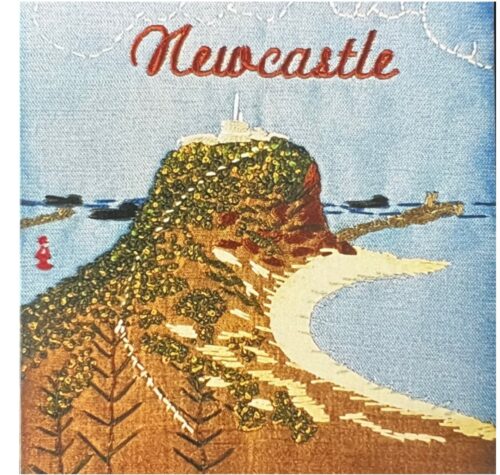
by Jill Lowe
Newcastle: the gateway to the Hunter Valley, was historically a coal and steel town, and so the closing of the BHP steelworks in 1999, shifted the focus to the port with its excellent harbor. A modern city with excellent restaurants, amazing coastline of the Pacific Ocean, it has many undulating and steep hills and cliffs. The elegant and updated foreshore, thanks to initiatives such as Honeysuckle development in the early ’70’s, allows for views of the many ships using the harbor. City architecture is impactful and features examples of Classical Italianate Renaissance, Victorian, through Brutalist Modernism paying homage to Le Corbusier. The thundering surf, beautiful beaches, brilliant sunrises, glorious sunsets, changing colorful flowers and trees, birds that seem never to shut up, strings of cloudless days with cerulean skies, make Newcastle so enticing.
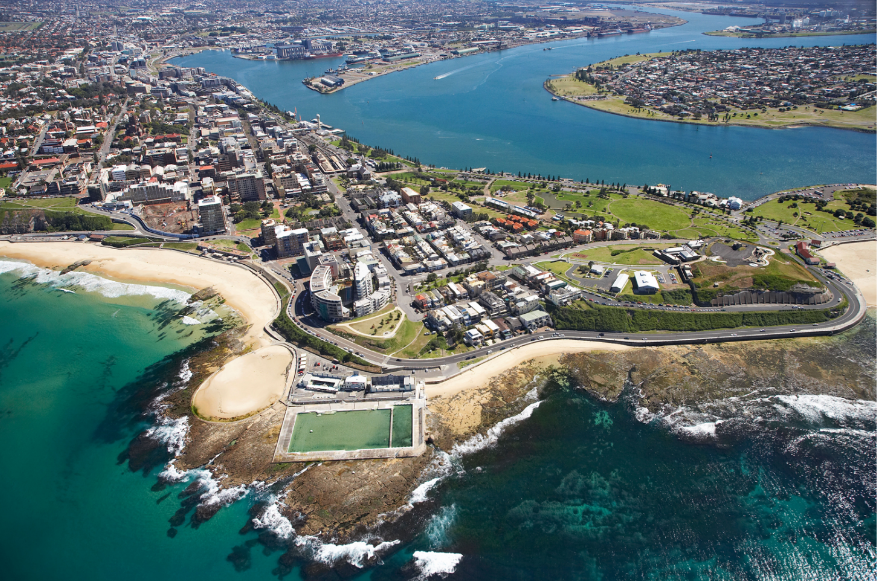
Juxtaposition of ocean, harbor, coastal walks, downtown shops and restaurants sets the stage for a walk-able, livable city
Coal, convicts and the indigenous traditional owners of the land, have shaped Newcastle from the beginning. 100 miles north of Sydney, a convict settlement was established in 1804 on the Hunter River, to exploit the coal deposits in the Hunter Valley. Imitating the famous coal port in England, it was named Newcastle. As the second largest city in the state of New South Wales, the biggest port on the east coast of Australia, it rates as the largest coal port in the world.
The biggest coal loader in the southern hemisphere, exports approximately 165 megatons of coal a year with approximately 4,400 ship movements a year.
At any one time, one can look out to sea and the horizon, to view some 6-10 cargo ships queuing to enter the port for loading coal.
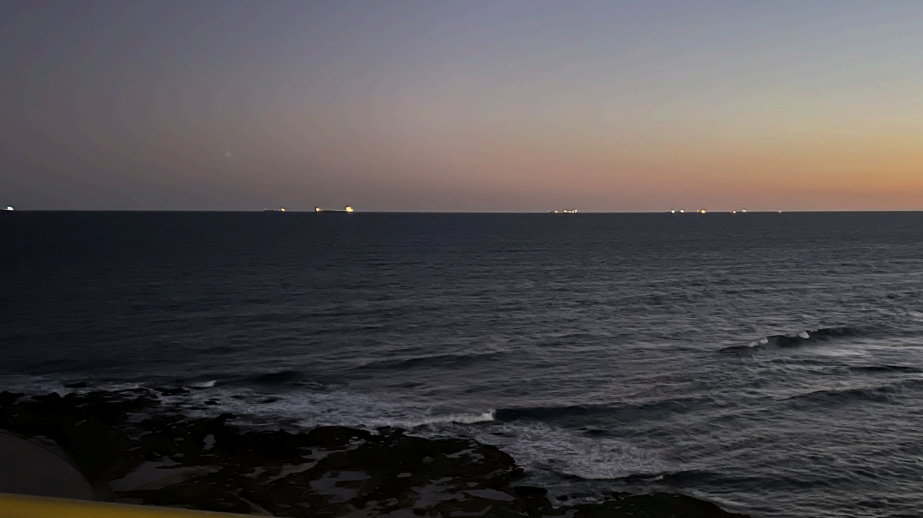 The cargo ships queuing on the horizon
The cargo ships queuing on the horizon
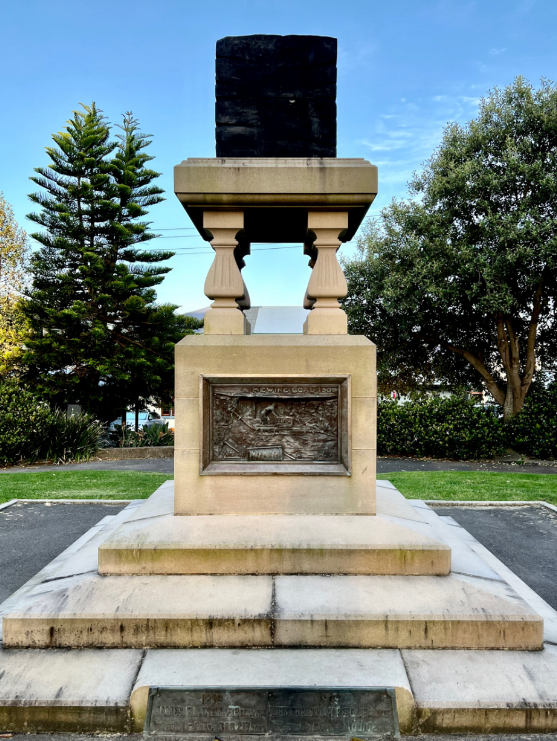
Statue of coals and reliefs depicting shipping of coal in Newcastle from 1804
Much discussion concerning reducing coal for Newcastle, both thermal (for power and heat) and metallurgical (for steel-making), has taken place. But the notion of reduction is contradicted by the increase in orders for coal. This demand was exacerbated by the pandemic, the war in Ukraine and unfilled orders especially from Asia, for the next decade. Whilst this, the world’s largest coal seaport Newcastle, as of January 2022 is powered by 100% renewable energy, any plans to manage a transition of the coal workforce is largely still in the future. Initiatives such as those used in Spain and Germany may be studied.
Nobbys Headland and Lighthouse is the southern entrance to the harbor. A landmark in the city and the perfect place to observe shipping entering the harbor.
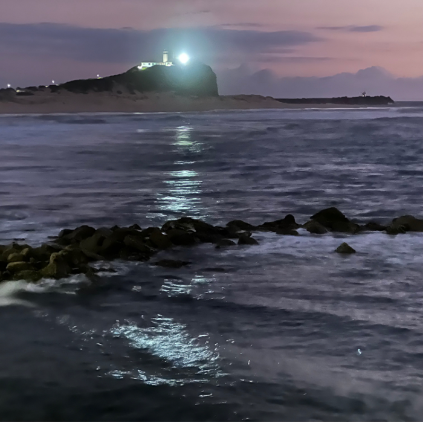 |
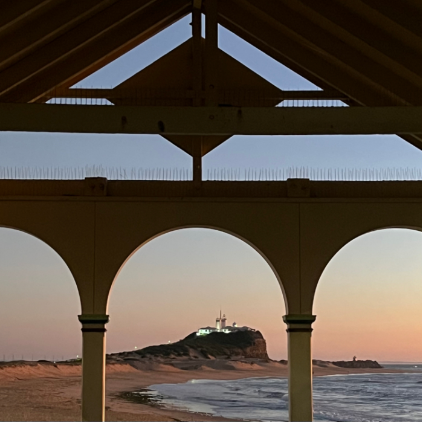 |

Silversea Silver Muse entering the harbor
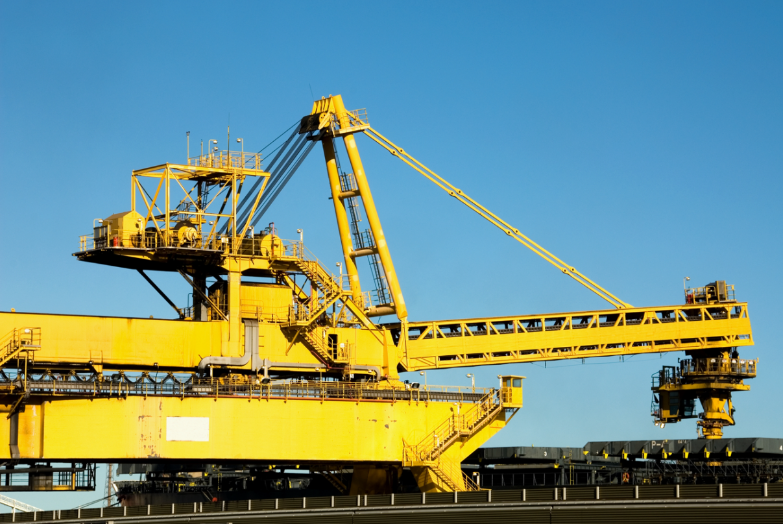
One of three coal loaders in Newcastle to serve the many bulk cargo carriers
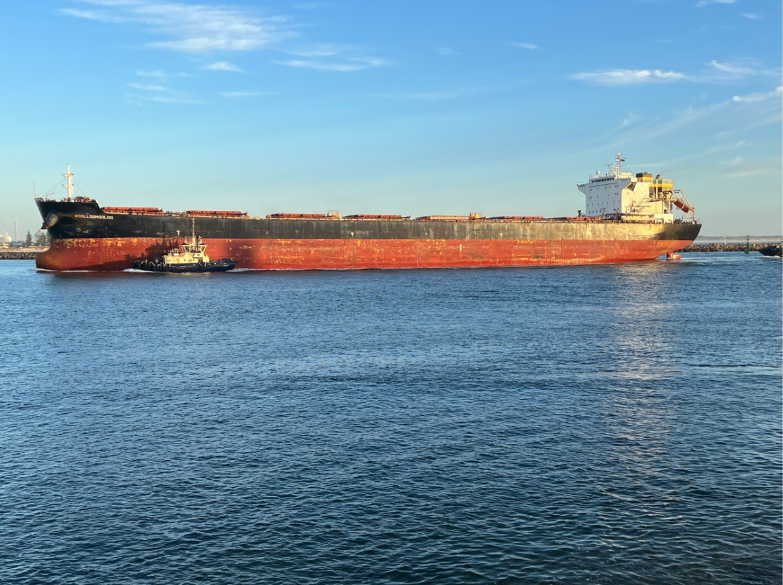
Ship Woolloomooloo under the flag of Malta, entering the harbor to be loaded with coal
Nobbys is a quintessential revered feature of Newcastle and the Newcastle ADFAS (Australian Decorative and Fine Arts Societies) chose this embroidery to be included in a quilt celebrating 30 years of ADFAS.
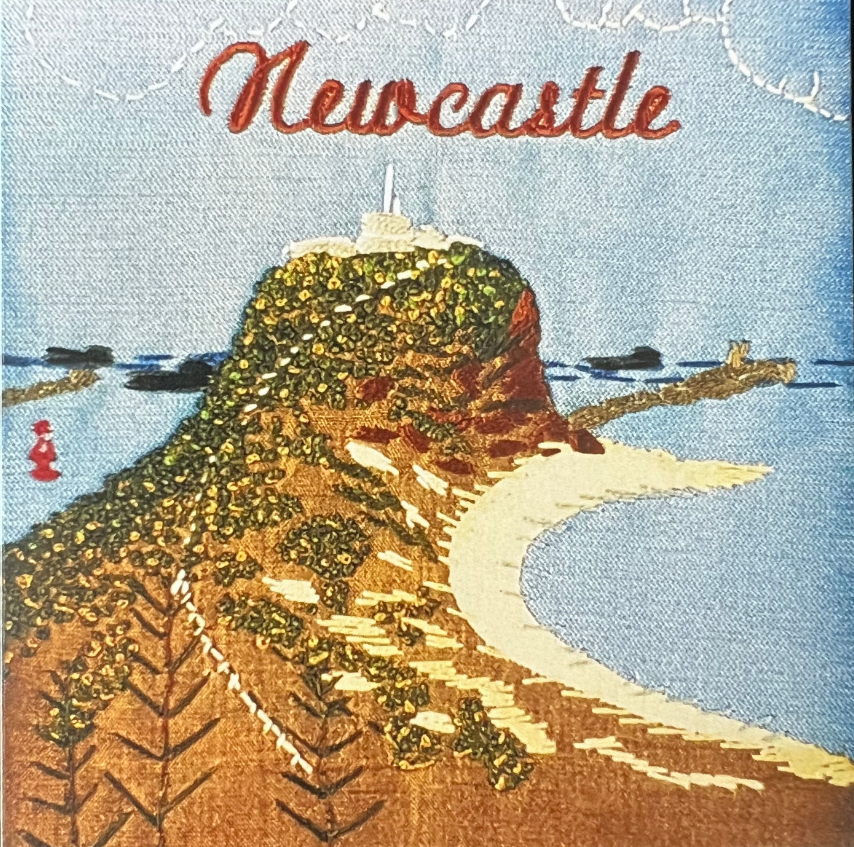 Embroidery by Gai LeMarchant
Embroidery by Gai LeMarchant
Artwork by Anne Pell
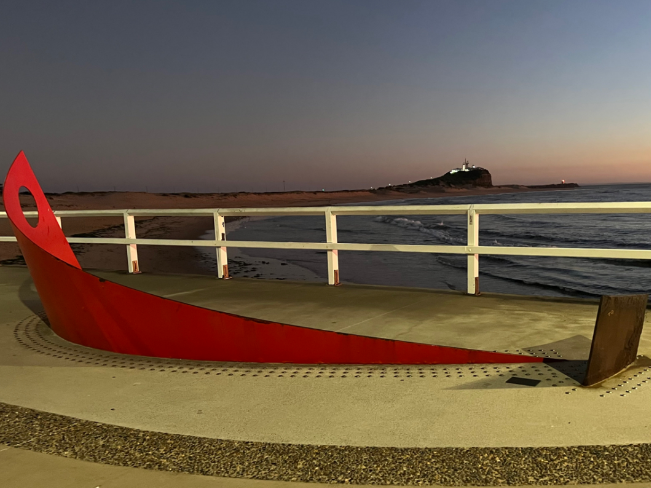
The Sculpture Grounded is an abstract representation of the ship Pasha Bulker’s bow.
This ship was grounded on Nobby’s beach in June 2007 in a storm. Crew members were successfully rescued. The sculpture gives plenty of opportunity for creative photography.
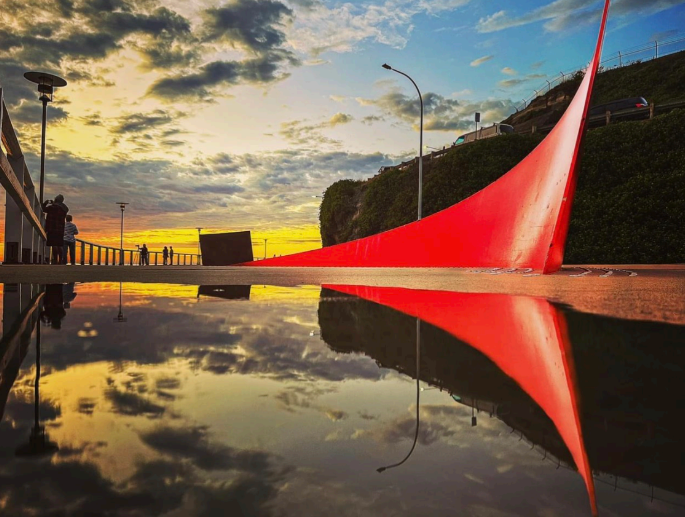 Photo courtesy @stevefromnewy
Photo courtesy @stevefromnewy
On the north side of Newcastle Harbor: a ferry ride away, is Stockton and the magnificent Bight Sand Dunes and the Worimi Conservation Lands. It has been a recent practice to give dual names to natural landscape features reflecting the Worimi and Awabakal indigenous traditional owners of the land.
Recognized as the largest moving coastal dunes in the Southern Hemisphere, it provides an adventure playground.
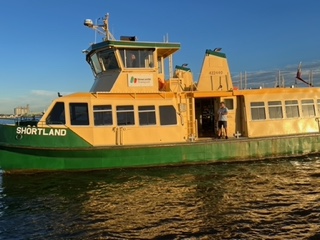 |
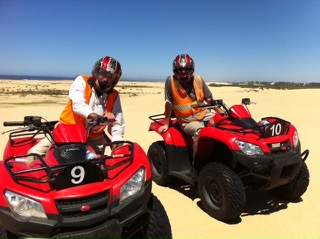 |
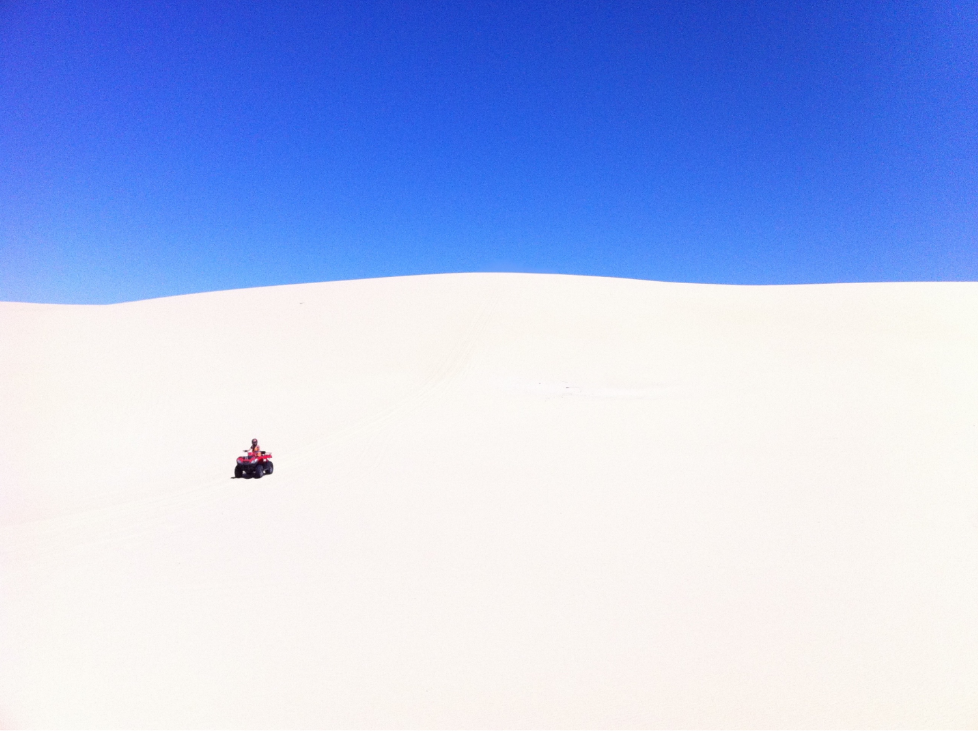
It has been a practice in coastal Australia to harness sea water to provide swimming pools or baths. These public seawater pools are sited on a rocky surf coast, so that waves can wash into the pool. Prominent in Newcastle are the art deco Newcastle Ocean Baths, the Merewether Baths (the largest in the southern hemisphere where 6 olympic size pools can fit), the Bogey Hole and a smaller “canoe” pool. The Canoe Pool in the 50’s had a map of the world on its floor so that delighted children could canoe around the world before lunch.
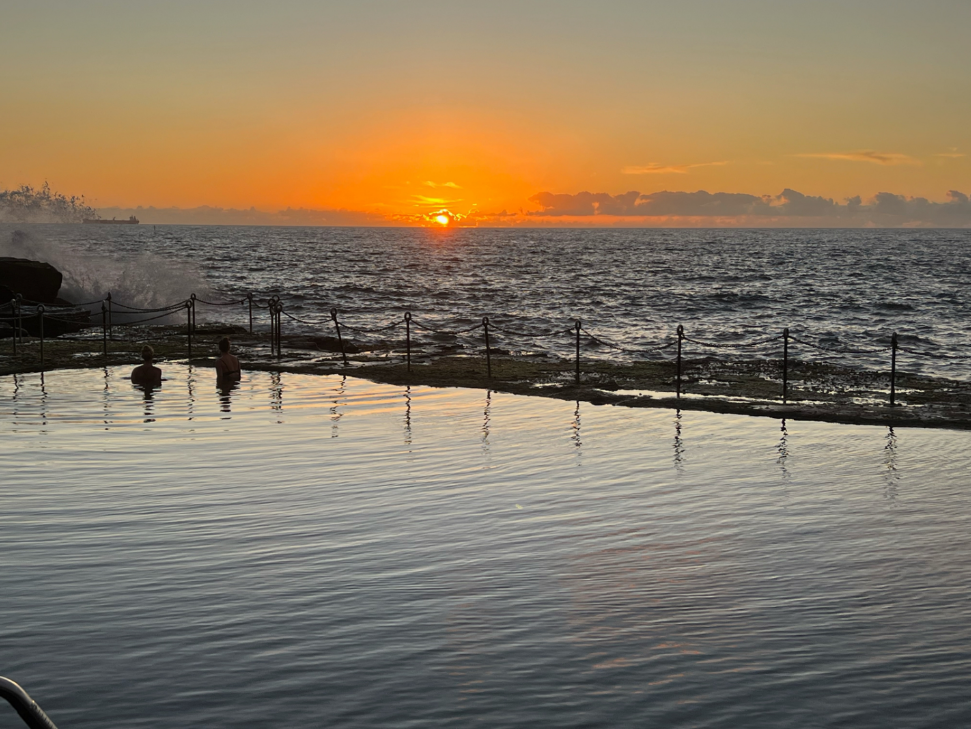 The convict hewn Bogey Hole at sunrise
The convict hewn Bogey Hole at sunrise
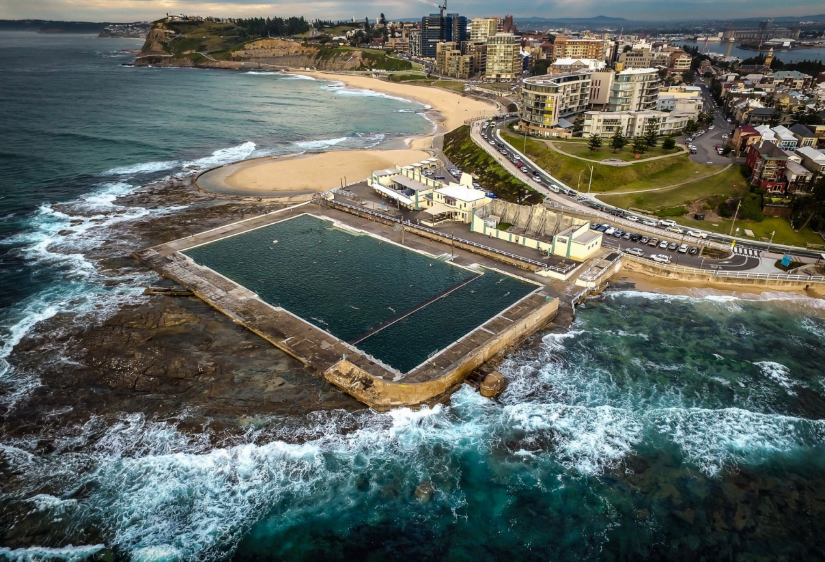
Newcastle Ocean Baths
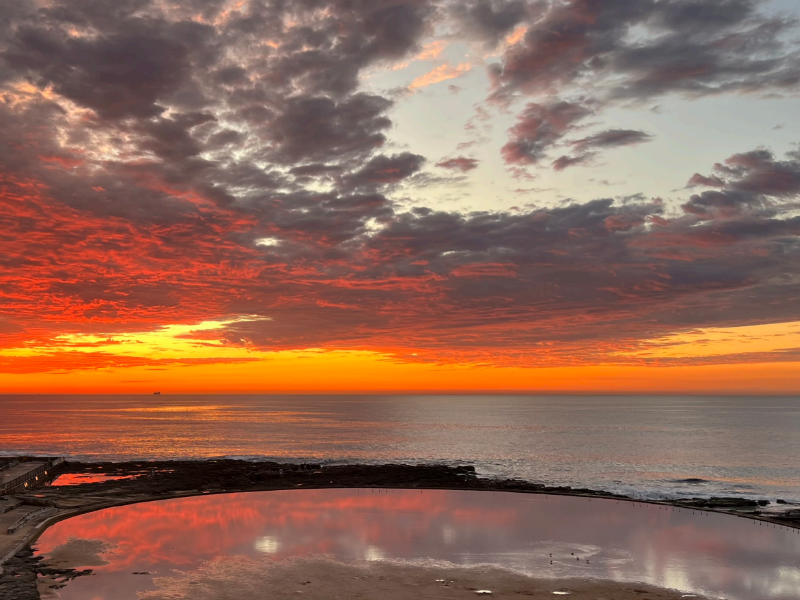
The Canoe Pool
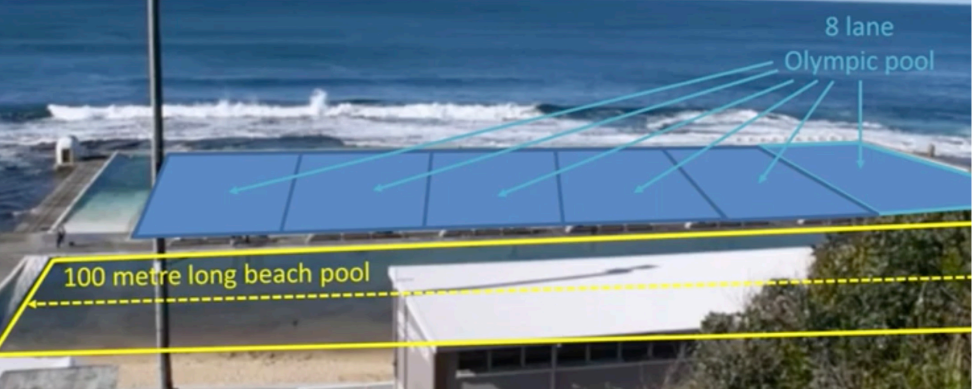
Merewether Baths: the largest ocean pool in the southern hemisphere can fit 6 full size olympic pools.
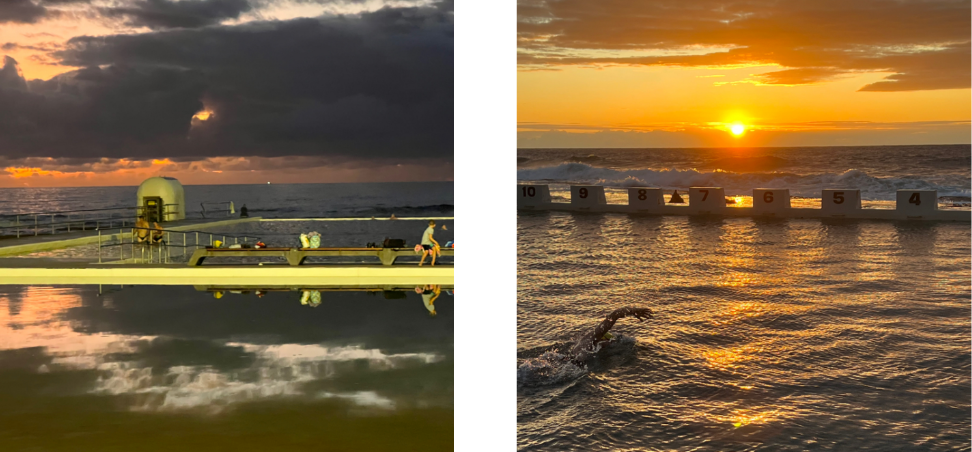 Regular early morning swimmers
Regular early morning swimmers
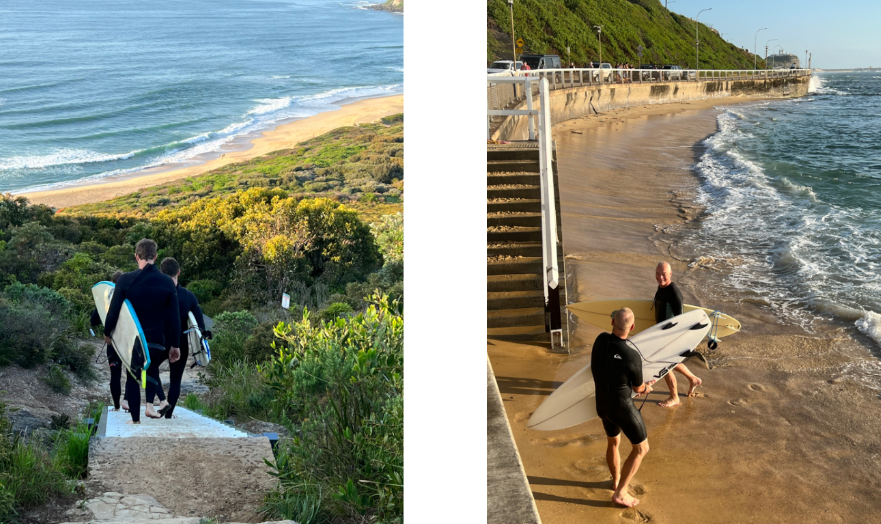
Plenty of opportunity to surf, hang-glide or walk
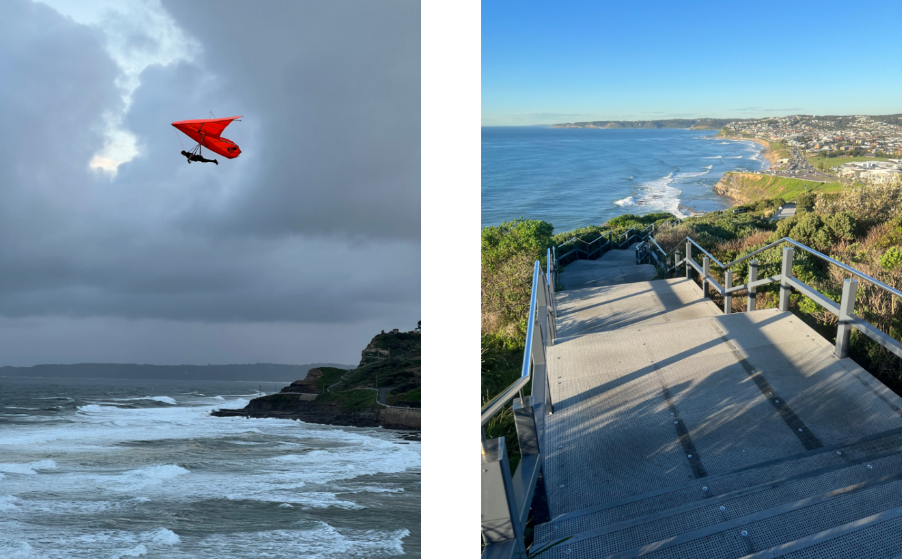
A re-purposed disused colliery rail line: the Fernleigh Track is now a hiking and biking track for some 9 hilly miles, through this beautiful railway tunnel.

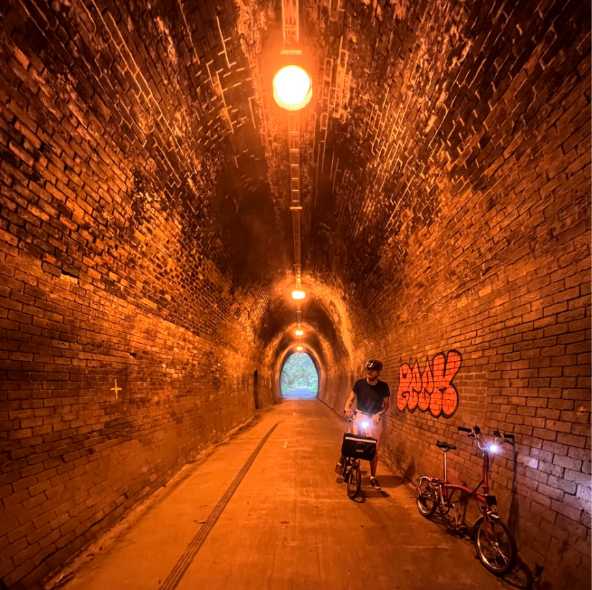
Breakfast, coffee houses, restaurants are plentiful, with imaginative and delicious foods and presentations. Many heritage buildings such as the Paymasters Cafe, the Customs House restaurant, or The Signal Box indicate the original function.
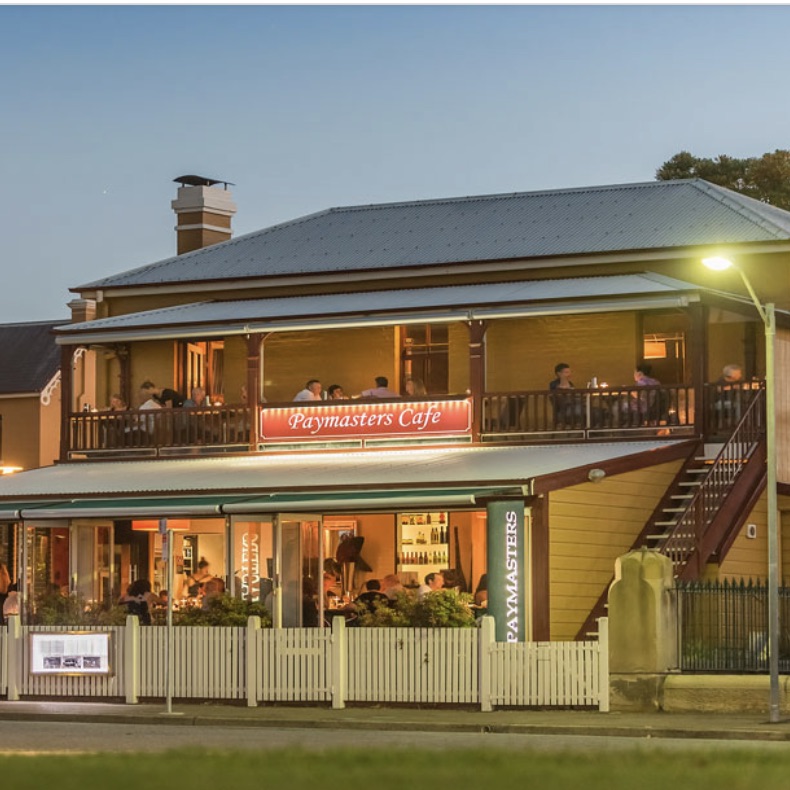 Paymasters Cafe
Paymasters Cafe
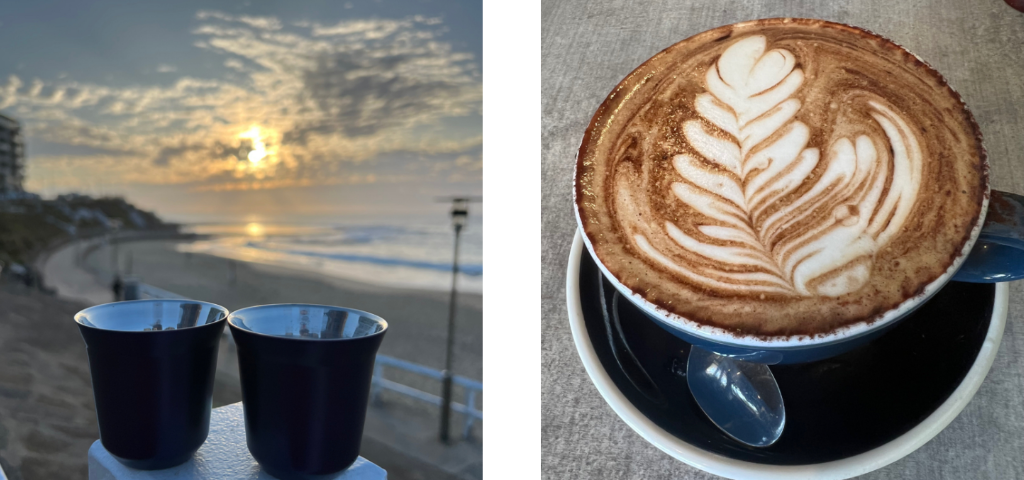
The Hunter Valley is rich with wineries, and restaurants in undulating bushland.
Bistro Molines in a sylvan, eucalyptus setting with the vines, views, gentle breezes and amazing food is a highlight in the Valley. Robert Moline’s cuisine strays not far from his French roots, and with his wife Sally has been a restaurateur with many accolades, in the Valley since early ’70’s. A short drive, or even a helicopter can get you there as parking is available for both!
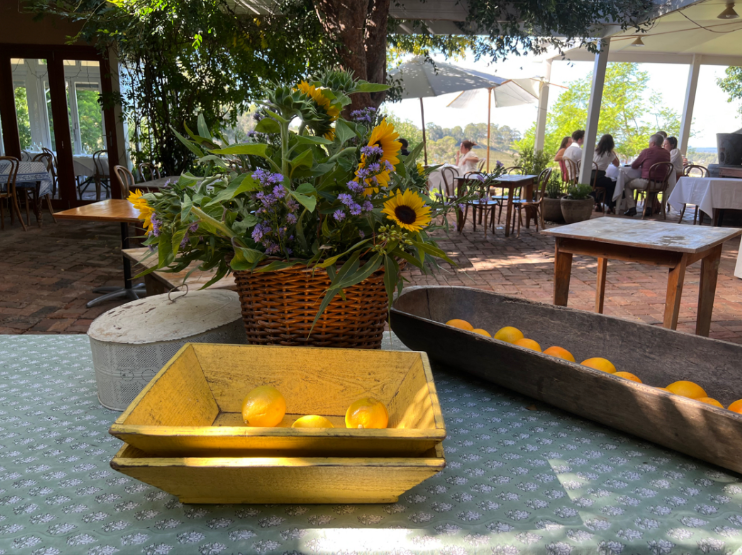
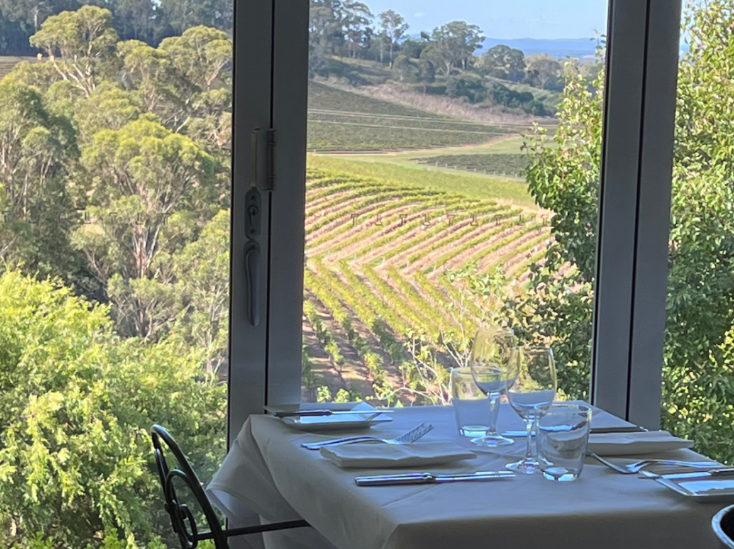
In this creative hub on the NSW North Coast is The Newcastle Art Gallery– currently undergoing expansion-holding some 7000 works. Iconic Australian artist Brett Whiteley is represented by several artworks including the large scale Black Totem II which is located near the entrance of the gallery.
 The Newcastle Art Gallery
The Newcastle Art Gallery
The city’s heritage-listed former police station houses The Lock-Up, a cultural centre of art. A recent exhibit was Alex Seton’s series of glass installations: EVERYTHING WAS BEAUTIFUL, AND NOTHING HURT. The exhibit honored the light shed from the luxurious modernist chandeliers produced in the last century by the now closed Leonora Glassworks. Alex, an Australian artist based in Sydney works in all media, is known for contemporary marble carving.
 The Lock-up and Alex Seton exhibit
The Lock-up and Alex Seton exhibit
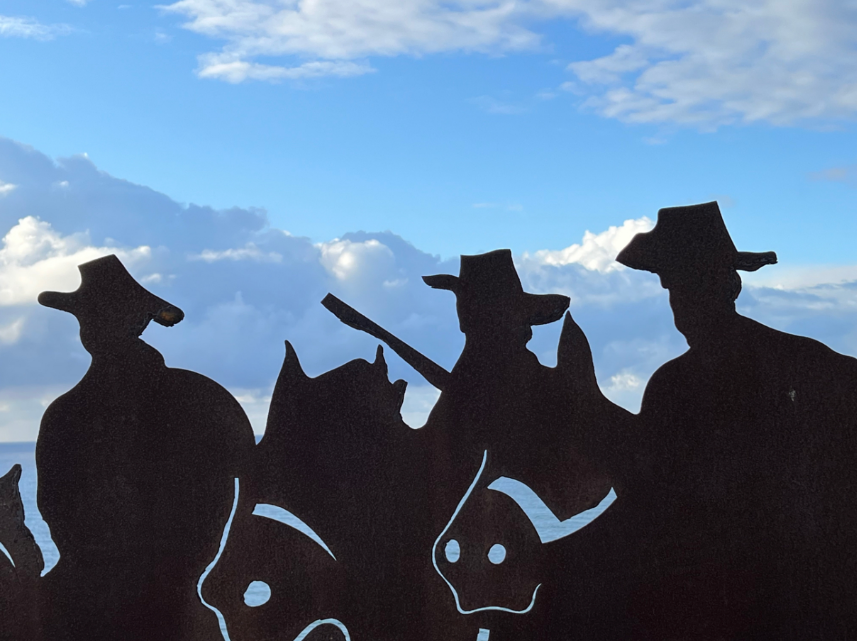
Striking steel silhouettes of soldiers along the Newcastle Memorial Walk, are engraved with the names of people from the region who served in WWI.

Architecture for public buildings and residences feature the classical Italianate Renaissance and Federation style architecture,Victorian, Art Deco, with a surge in the 70’s in Brutalist or Modernist architecture with its homage to Le Corbusier.

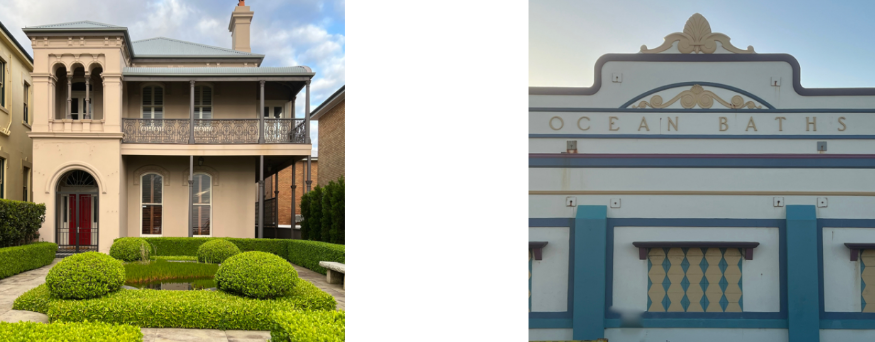


Designed as the Newcastle Council City Administration Centre in 1977, it entered its new life in 2022 as a five-star luxury hotel. The ‘roundhouse’ was designed by Australian architects Romberg and Boyd in association with Wilson and Suters.
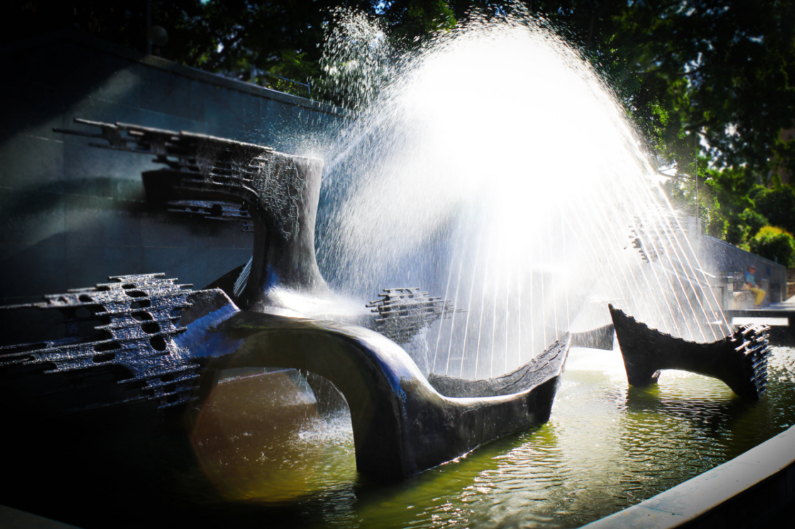
The simply beautiful sprays of the James Cook Memorial Fountain operated for the first time in 1966. Designed by sculptor Margel Hinder, its pools and surrounds were designed by the prolific Newcastle architect Brian SutersAM. (AM-Member of the Order of Australia).
So respected is Brian Suters, he was named a Freeman of the City in 2022, the city’s highest honor.
Convicts, white settlers and aboriginal inhabitants are part of the history of Newcastle. The violence and struggle and toil of the thousands of convicts who laid the foundations of Newcastle is depicted in The Convict Valley by Mark Dunn. Convict transportation to Australia from Britain, as punishment for crimes, saw some 162,000 convicts transported between 1788 and 1868.
Today that history is depicted in plaques, excavations, and homages around the city.
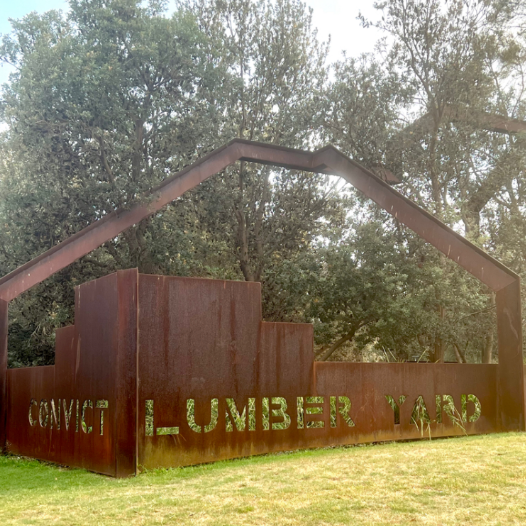
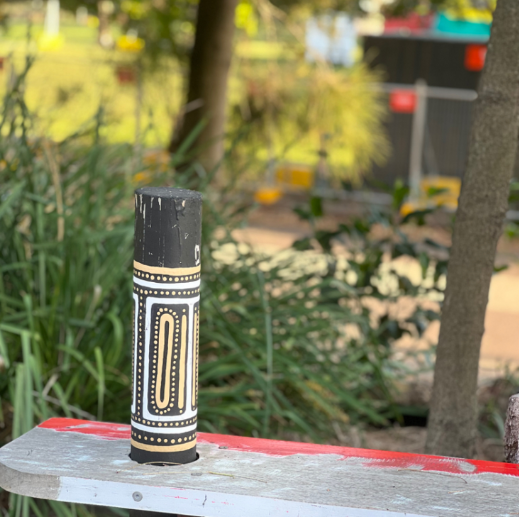
Various landmarks are known well to the residents.
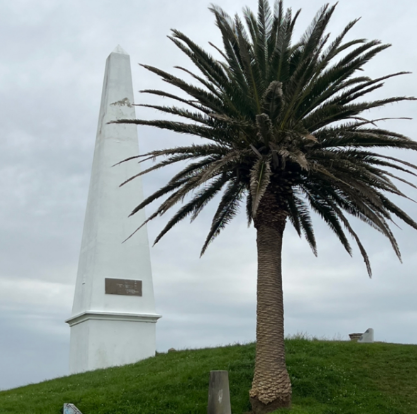
Obelisk: site of a first navigational marker |
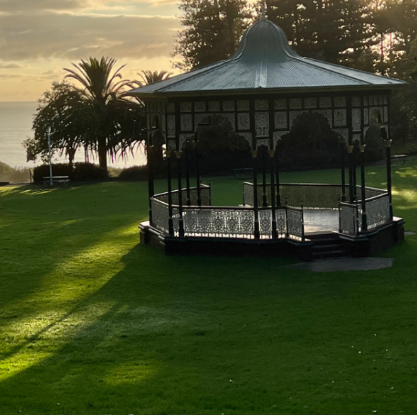
King Edward Park Rotunda |
 Fort Scratchley, now a museum was built in 1882 as a former coastal defense installation to defend against a possible Russian attack
Fort Scratchley, now a museum was built in 1882 as a former coastal defense installation to defend against a possible Russian attack
The only fort in Australia to return enemy fire, the guns at Fort Scratchley did so to a Japanese submarine in the early hours of June 8, 1942. The attack came days after a Japanese attack on Sydney Harbour, the target is believed to have been the BHP steelworks – site of the centre of Australia’s war manufacturing effort.
Sunrises are so varied, from bruised violets to fiery reds. The juxtaposition with the might of the ocean, clouds and reflecting puddles is a perennial draw.
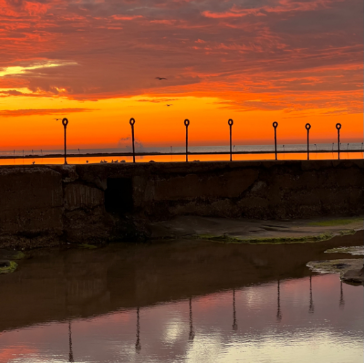 |
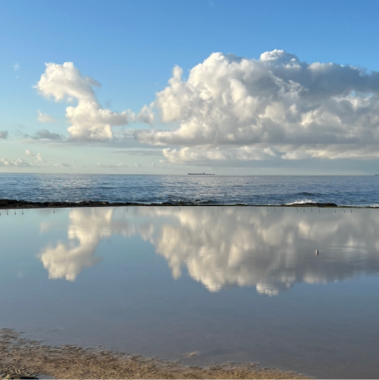 |
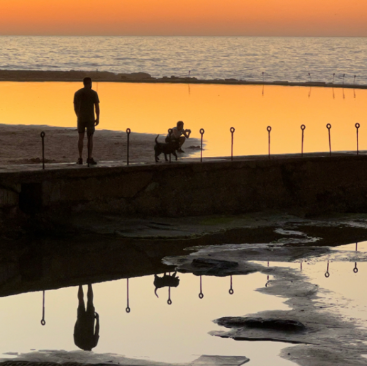 |
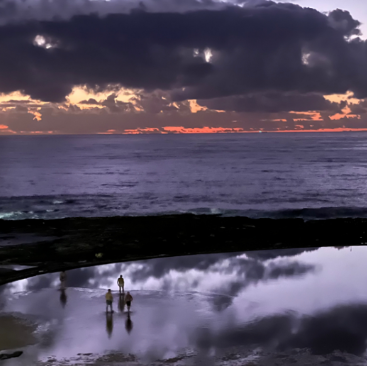 |
 |
 |

Photo Courtesy @stevefromnewy
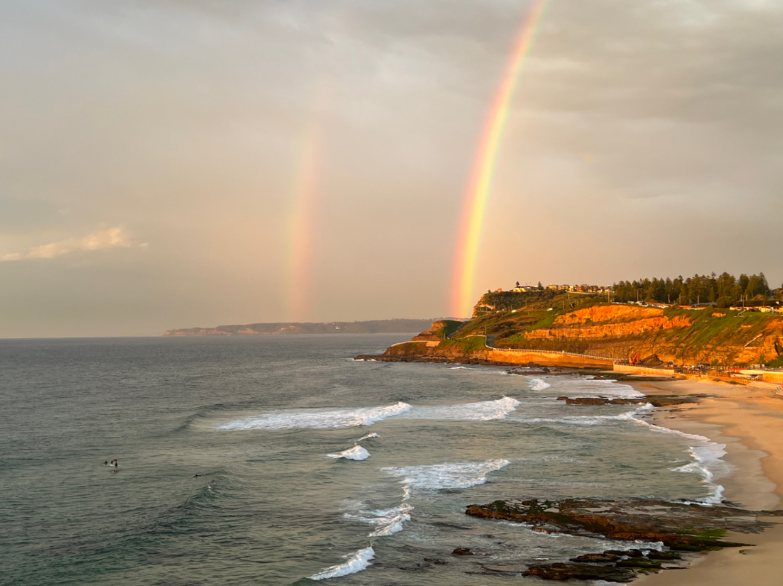
All weather possible in the same day!
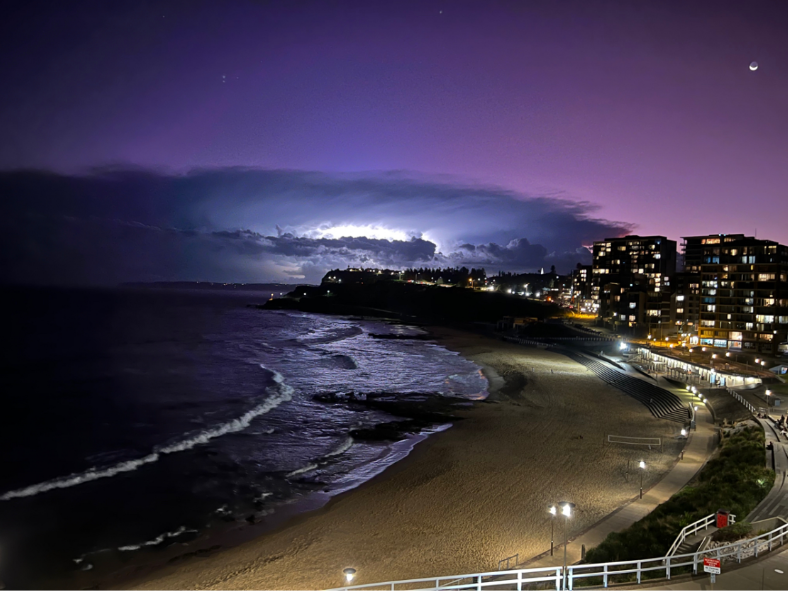
Newcastle is a coastal, geographically beautiful and elegant, livable city. Community activist groups have successfully preserved many public lands. As in all cities there is always a balancing between those favoring development with those preserving.
The Hunter River flows to Newcastle from the fertile Hunter Valley with its plethora of vineyards, restaurants, sculpture gardens, sheep and cattle grazing and horse breeding facilities. With its important harbor, high cliffs abutting the Tasman Sea part of the mighty Pacific Ocean, it is a pleasure to visit this city.

Notes and Links:
Photo of Jill : Joe Mazza Bravelux inc.
Photos copyright © 2023 Jill Lowe. All rights reserved
Images with Shutterstock license
Newcastle Memorial Walk
Book: The Convict Valley: The Bloody Struggle on Australia’s Early Frontier by Mark Dunn
Wollombi Sculpture Festival
Bistro Molines



